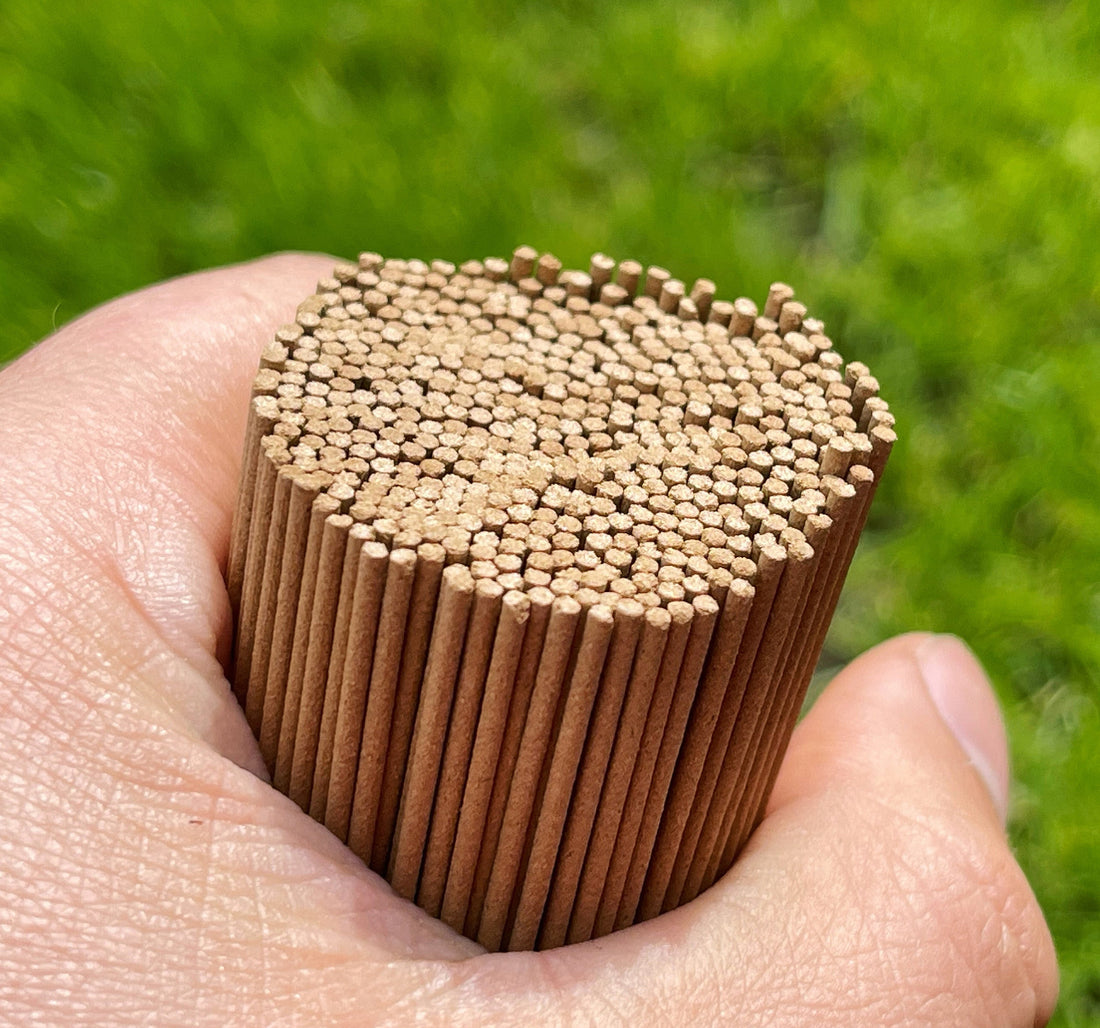When cruising the internet for incense cones or sticks, one is immediately confronted with numerous tempting ‘budget-friendly’ options. However, recognising products of (at least) moderate quality can initially pose a challenge. What factors contribute to the affordability of these offerings, and are they conducive to a healthy indoor environment when used with closed windows? We all want to be able to light an incense stick with the reassurance that it isn’t doing us any harm! Let's explore and learn together…
What are the reasons behind the low cost of these incense sticks and cones, and are they safe for indoor use?

The lower end of the incense market, often found in dollar stores, is saturated with sticks of uncertain and dubious origin. Some emit only a faint scent, suitable perhaps for repelling mosquitoes rather than for enjoyment. While occasionally one may encounter a pleasant aroma, cheaper incense sticks are typically constructed from a base material similar to that of firework lighters, known as a "punk stick." These sticks are often manufactured in the same facilities and can be crafted from waste wood materials, posing potential health concerns as a combustible substance. The reality is, the composition of blank sticks remains a mystery, as they are typically dipped in a solution of synthetic and artificial fragrances. While this may not initially seem alarming, the real concern lies in the chemical extenders utilized in the production process.

Dipropylene glycol (DPG) is frequently incorporated to enhance the longevity of the scent and bolster the manufacturer's profit margins. While DPG finds extensive use in various commercial applications, its combustion during the burning of incense sticks and cones emits harmful fumes, posing a significant health risk. Unfortunately, the incense industry lacks regulation regarding the materials used in manufacturing sticks or cones. Surprisingly, one can even find options like cow dung incense available. It's not uncommon to experience headaches or nausea around these products, not due to an allergy to incense itself, but rather as a natural reaction to the synthetic additives present in the sticks.
What defines quality in incense?
Decent-quality incense typically utilizes natural ingredients and, importantly, avoids extenders. A middle-of-the-road incense, such as Indian masala-style sticks, often employs charcoal as a base along with essential oils, powdered herbs, spices, and woods like sandalwood, star anise, cinnamon, or cedarwood. These offerings not only boast superior scents but are also healthier to enjoy.
Artisan incense sticks and cones often eschew charcoal altogether, relying instead on natural combustion from joss powder or makko powder. Makko powder, derived from the bark of the Asian Tabu No Ki tree, serves as a natural binder with minimal to no scent, aiding in the incense's burning process. These artisanal offerings often incorporate extremely rare and expensive ingredients like Agarwood and rare sandalwood powders. Some of these sticks, as thin as half a gram or less, require meticulous craftsmanship and dedication to produce. Despite their seemingly small size, even a 0.3g incense stick has the potency to fill a small room with its exquisite fragrance, offering an economically viable means to appreciate its beauty. 
Here at Guruaromatix we ONLY offer pure incense sticks with nothing apart from the listed material + around 20% makko powder to keep the stick together..that’s it!
Thank you for taking the time to explore this blog. I hope it provides you with valuable insights into the world of incense. Feel free to browse our store to discover if there's anything that catches your interest.
